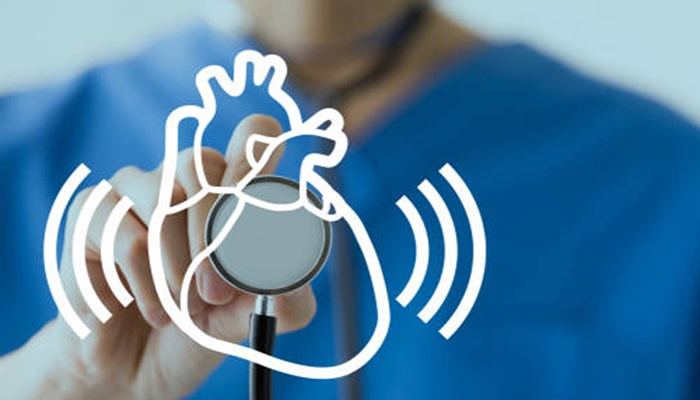Arrhythmia, a condition characterized by irregular heart rhythms, can range from benign to life-threatening. For many individuals, distinguishing when arrhythmia requires urgent medical attention can be crucial for timely intervention and potentially life-saving treatment. In this detailed guide, we explore the symptoms, signs, diagnostic approaches, emergency treatments, and preventive measures associated with arrhythmia emergencies, providing essential information for understanding and responding to this serious cardiac condition.
What Is Arrhythmia?
Arrhythmia refers to abnormal heart rhythms that disrupt the heart’s regular beating pattern. The heart’s electrical system, responsible for coordinating each heartbeat, can malfunction, leading to arrhythmias that may be too fast (tachycardia), too slow (bradycardia), or irregular. Common types of arrhythmias include atrial fibrillation (AFib), ventricular tachycardia, and bradyarrhythmias.
Symptoms of Arrhythmia
Recognizing the symptoms associated with arrhythmia is crucial in determining when immediate medical attention is necessary.
Symptoms may vary depending on the type and severity of the arrhythmia but commonly include:
Palpitations: Sensation of fluttering or racing heartbeat.
Dizziness or Lightheadedness: Especially if severe or associated with fainting.
Chest Pain or Discomfort: Pressure, tightness, or pain in the chest.
Shortness of Breath: Difficulty breathing, particularly during exertion or while lying down.
Fatigue: Unexplained tiredness or weakness.
SEE ALSO: Can Taking Statins Cause AFib?
when Is arrhythmia An Emergency
Certain signs indicate that arrhythmia requires immediate medical evaluation and treatment. These include:
Loss of Consciousness: Fainting or near-fainting episodes.
Severe Chest Pain: Especially if it radiates to the arm, neck, jaw, or back.
Difficulty Breathing: Rapid or severe shortness of breath.
Sudden Weakness or Paralysis: Particularly on one side of the body.
Palpitations Accompanied by Severe Symptoms: Such as chest pain, dizziness, or loss of consciousness.
Risk Factors for Arrhythmia Emergencies
Understanding the risk factors associated with severe arrhythmia complications can help individuals assess their own risk and take preventive measures. Common risk factors include:
Age: Older adults are at higher risk.
Heart Disease: Such as coronary artery disease or heart valve disorders.
High Blood Pressure: Hypertension increases the strain on the heart.
Diabetes: Especially if poorly controlled.
Prior Heart Attack: Increases the risk of arrhythmias.
Diagnostic Approaches in An Emergency Setting
When evaluating arrhythmia in an emergency, healthcare providers may use several diagnostic tests to assess the heart’s electrical activity and overall condition. These tests include:
Electrocardiogram (ECG or EKG): Provides a snapshot of the heart’s electrical activity.
Holter Monitor: Continuous ECG recording over 24-48 hours.
Event Monitor: Records heart activity during symptoms.
Blood Tests: To assess cardiac enzymes and electrolyte levels.
Emergency Treatment Options
Immediate treatment for arrhythmia emergencies aims to restore normal heart rhythm and stabilize the patient. Treatment options may include:
Cardioversion: Electrical shock to reset the heart’s rhythm.
Medications: Intravenous drugs to control heart rate or rhythm.
Defibrillation: Higher energy shock for life-threatening arrhythmias like ventricular fibrillation.
Emergency Procedures: Such as catheter ablation for certain types of arrhythmias.
When to Seek Immediate Medical Help
It’s essential for individuals experiencing symptoms suggestive of an arrhythmia emergency to seek prompt medical attention. Delaying treatment can lead to serious complications or even death. If you experience any of the following symptoms, call emergency services or go to the nearest emergency room:
Sudden Loss of Consciousness or near-fainting episodes.
Chest Pain that is severe or accompanied by other symptoms like shortness of breath.
Severe Palpitations with dizziness or fainting.
Difficulty Breathing or sudden onset of weakness or paralysis.
Preventive Measures And Long-Term Management
While not all arrhythmias can be prevented, adopting a heart-healthy lifestyle can reduce the risk of developing serious complications:
Healthy Diet: Low in saturated fats, cholesterol, and sodium.
Regular Physical Activity: Aim for at least 150 minutes of moderate-intensity exercise per week.
Maintain a Healthy Weight: Obesity increases the risk of heart disease and arrhythmias.
Manage Stress: Practice relaxation techniques like yoga or meditation.
Quit Smoking: Smoking cessation significantly reduces cardiovascular risk.
Monitor Health Regularly: Keep track of blood pressure, cholesterol levels, and overall heart health.
Conclusion
Arrhythmia emergencies require swift recognition and immediate medical intervention to minimize the risk of complications and improve outcomes. By understanding the symptoms, signs, and treatment options associated with arrhythmia emergencies, individuals can take proactive steps to protect their heart health and seek timely medical care when needed. Through ongoing research and advancements in cardiac care, the prognosis for individuals with arrhythmias continues to improve, underscoring the importance of awareness, prevention, and early intervention in managing this complex cardiovascular condition.

